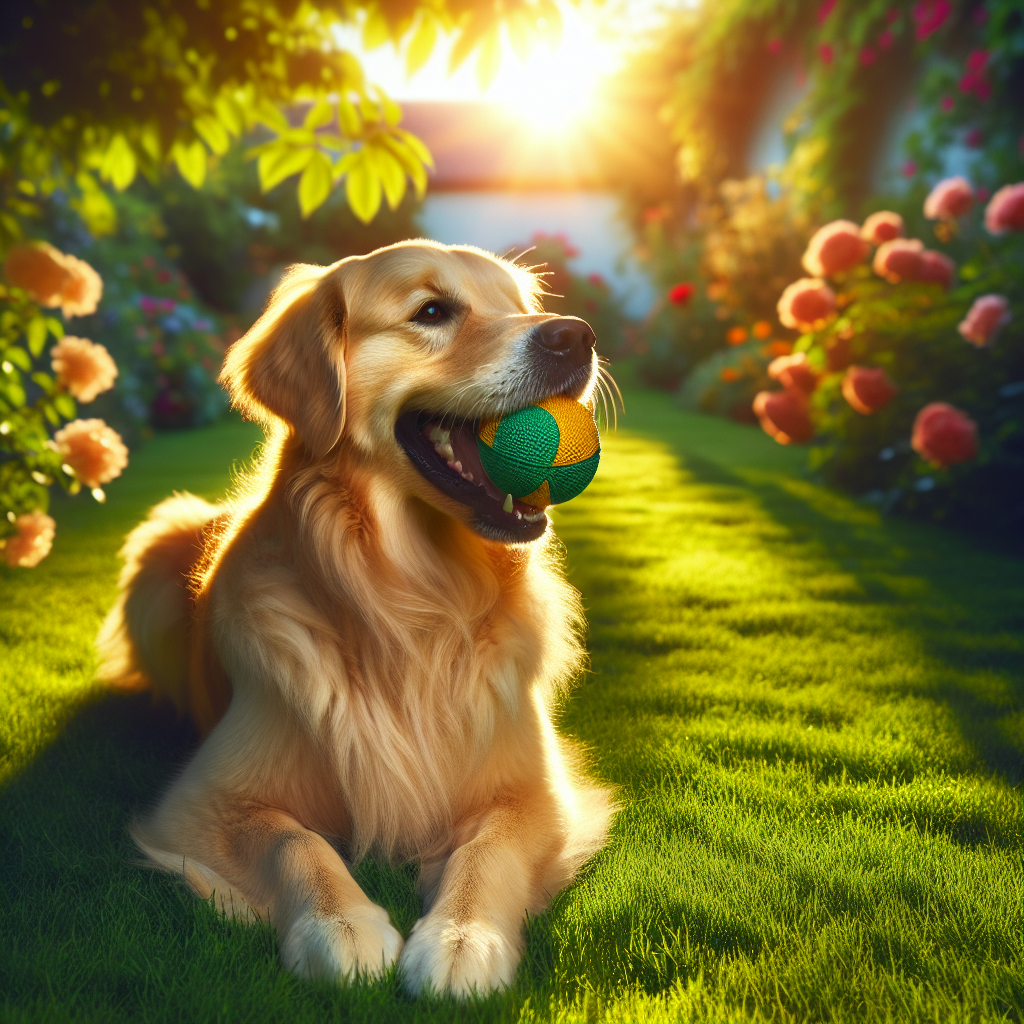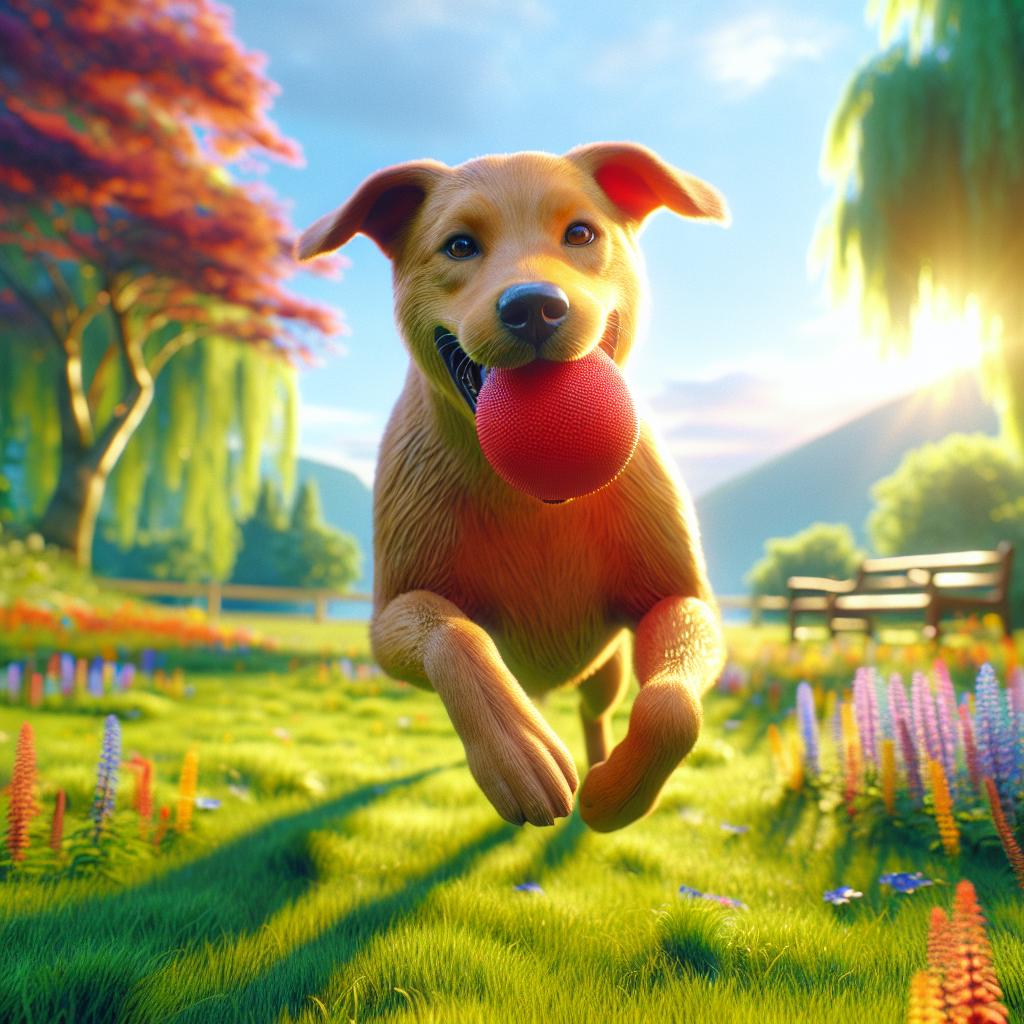How to Train Your Dog to Play Fetch: Expert Tips!
Playing fetch is more than just a fun activity; it's an excellent way for your dog to get physical exercise and mental stimulation. Fetch training can strengthen the bond between you and your furry friend, while also reinforcing good behavioral skills. If you're wondering how to train your dog to play fetch, you've come to the right place. Our guide will provide you with expert tips to ensure your dog enjoys this classic game.
Before diving into training, it's important to choose the right fetch toys. Opt for toys that are safe and durable, such as rubber balls or frisbees. These will not only withstand your dog's enthusiastic bites but also prevent potential choking hazards. Keep in mind that some dogs might prefer soft toys, so it's worth experimenting to see what catches your pup's interest.
It's also essential to create a positive environment for learning. Use positive reinforcement techniques such as praises and treats to encourage your dog. This will make the training process enjoyable and rewarding for them. Remember, patience is key! Every dog learns at their own pace, and consistency will yield the best results.
Treat your furry friend to the joy they deserve with our range of delicious and nutritious dog treats as you embark on this fetch training journey. Offering them a tasty reward can significantly enhance their motivation and success rate.
Choosing the Right Fetch Toys
Selecting the appropriate fetch toys is crucial for a successful and enjoyable fetch training experience. The right toy not only ensures safety but also keeps your dog engaged and excited. When considering options, it's important to choose toys that are both durable and safe for your dog's size and breed.
**Durability** is a key factor in choosing fetch toys. Look for toys made from tough materials like rubber or nylon, which can withstand vigorous chewing and fetching activities. Avoid toys that can easily break apart or have small parts that might pose a choking hazard. Well-crafted toys are not only safer but also offer longevity, making them a worthwhile investment.
Additionally, the **size of the toy** should be appropriate for your dog's breed. A toy that is too small can be a choking risk, while one that is too large might be difficult for smaller dogs to carry. For larger breeds, consider toys designed specifically for their size and strength. Companies often specify the recommended size and breed on their packaging, making it easier to make an informed choice.
It's also beneficial to choose toys that are easy to clean, especially if you'll be playing outdoors. Toys that can be rinsed off or thrown in the washing machine can help maintain hygiene and prolong their usability. Lastly, some toys come with added features like squeakers or different textures to captivate your dog's interest, adding an extra layer of fun to the game.
Step-by-Step Fetch Training Guide

Training your dog to play fetch can be a rewarding experience, fostering a stronger bond between you and your furry friend. Follow this **step-by-step guide** to make the process smooth and enjoyable for both of you.
- Introduce the Toy: Start by letting your dog become familiar with the fetch toy. Allow them to sniff and play with it, ensuring they associate the toy with fun and positive experiences. Use treats and praise to reinforce interest.
- Encourage Chasing: Toss the toy a short distance and encourage your dog to chase it. Use an enthusiastic tone and gestures to motivate them. If they pick it up, reward them with praise or a treat, even if they don’t bring it back immediately.
- Teach "Bring it Back": Once your dog reliably chases the toy, focus on getting them to return it. Use commands like "come" or "bring it here". If your dog hesitates, use treats to lure them back to you, gradually reducing the distance.
- Practice "Drop It": When your dog returns with the toy, teach them to drop it on command. Offer a treat in exchange for the toy, saying "drop it". Over time, they will learn to release the toy without needing a treat each time.
- Extend the Distance: Gradually increase the distance you throw the toy. This helps build their endurance and strengthens their understanding of the fetch game. Continue to reward them for successful returns.
Throughout the training, maintain a positive and patient attitude. Consistent practice is key, and with time, your dog will learn to love playing fetch as much as you do!
Teaching Essential Fetch Commands

Teaching your dog the essential commands is a crucial aspect of fetch training. These commands not only enhance the game but also improve your dog's overall obedience and responsiveness. Here’s how you can incorporate some key commands into fetch training:
- "Fetch": Begin by associating the command with the act of throwing the toy. Clearly say "fetch" each time you toss the toy. With repetition, your dog will learn to anticipate the action whenever this word is spoken. Reinforce this behavior with consistent praise and treats.
- "Come": Essential for ensuring your dog returns to you after retrieving the toy. Use it consistently when your dog has the toy in their mouth, encouraging them to run back to you. Reward them with affection or a treat to solidify this command in their mind.
- "Drop It": This command is vital for getting your dog to release the toy once they return with it. Practice by exchanging the toy with a treat, using the command "drop it" each time. Over time, your dog will learn to drop the toy on command without needing a treat every time.
- "Stay": Use this command to keep your dog still before you throw the toy, enhancing their patience and control. Start with short durations and gradually increase the time as they become more adept at staying put.
By integrating these commands into your fetch routine, you’ll not only make the game more enjoyable but also strengthen your dog’s discipline and comprehension. Patience and consistency are key, so celebrate small successes and keep each session fun and engaging.
Addressing Common Fetch Challenges

Even the most enthusiastic dogs can encounter challenges when learning to play fetch. Understanding and addressing these challenges can make the training process smoother and more enjoyable for both you and your furry friend. Here are some common issues and how to tackle them:
- Lack of Interest: If your dog seems uninterested in fetching, try experimenting with different toys. Some dogs prefer balls, while others may be more excited by a frisbee or a squeaky toy. Identify what excites them and use it as a tool to engage their interest.
- Reluctance to Return: Some dogs enjoy the chase but aren’t keen on bringing the toy back. To address this, encourage your dog to return by using a high-value treat or a second toy. Call them back with enthusiasm and reward them for coming to you.
- Not Releasing the Toy: Dogs can be possessive of their toys, making it difficult for them to let go. Reinforce the "drop it" command by practicing with treats. Offer a treat in exchange for the toy to encourage them to release it willingly.
- Distractions: Outdoor environments can be full of distractions. If your dog gets easily distracted, try starting your training sessions in a quiet, controlled area. Gradually introduce more distractions as your dog becomes more focused and responsive to the game.
Addressing these challenges requires patience, consistency, and positive reinforcement. Remember, every dog learns at their own pace, so adjust your approach to suit your pet’s unique personality and preferences.
Maintaining Fetch Game Enthusiasm

Keeping your dog excited about playing fetch is crucial to maintaining their interest in the game over time. Here are some tips to ensure your furry friend remains enthusiastic and eager to participate:
- Vary the Toys: Rotate between different toys to keep the game fresh and exciting. Introducing new shapes, sizes, and textures can stimulate your dog’s curiosity and make fetch more enjoyable.
- Change the Environment: Playing fetch in different locations can be thrilling for your dog. Explore new parks, beaches, or even your backyard to provide a change of scenery and keep the game engaging.
- Incorporate Positive Reinforcement: Reward your dog with praise or treats for successful fetches. This positive reinforcement encourages them to repeat the behavior and strengthens their bond with you.
- Keep Sessions Short and Sweet: Avoid overplaying, which might lead to boredom or fatigue. Short, energetic sessions help maintain your dog's interest and enthusiasm.
By following these tips, you can ensure that fetch remains a fun and beneficial activity for your dog. Remember, the key is to keep the game exciting and varied. Treat your furry friend to the joy they deserve with our range of delicious and nutritious dog treats, available at Happypup.dog. Regularly rewarding your dog will not only maintain their enthusiasm but also make fetch a rewarding experience for both of you.






